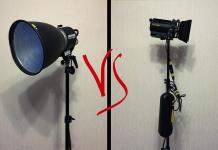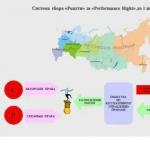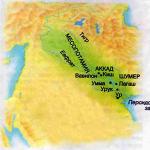As an eleven-year-old boy, Alfred Stieglitz accidentally ended up in a darkroom, where he saw an old photographer retouching negatives. He asked in surprise what this was for, and the master told him that it made the person in the picture more natural. “I would never do that,” the teenager remarked. And he didn't lie. Having achieved recognition in the world of photography, Alfred Stieglitz never resorted to retouching his negatives.
Curriculum Vitae
The future genius of photography was born on January 1, 1864 in the small town of Hoboken, near New Jersey. His parents emigrated to America from Germany, but they wanted their son to receive a higher education in his homeland, so the family returned back in the early eighties of the last century. Arriving in the capital, the young man entered a higher technical school to study. A couple of months passed, and Alfred began to experience a craving for art. During one of his walks around Berlin, Stieglitz, obeying a momentary impulse, bought himself a camera. Since then, the young man’s life has changed dramatically. He did not part with his acquisition, traveled around Europe and photographed everything that caught his eye.
This period became a time of bold experiments for Alfred Stieglitz. One day he decided to take a photo of a car parked in a poorly lit basement. This required a day of exposure. As Stieglitz said, he wanted to find the subtle line between the technical capabilities of the equipment and the photographer’s own skills. The skill of the young talent grew very quickly - just a few years after his debut, he won a silver medal at an amateur photography competition held in London in 1887.


In 1890, Stieglitz arrived in New York, where he began making a living by making photogravures. From the moment he arrived in America until the beginning of the twentieth century, the photographer became the owner of more than 150 various awards and prizes. In 1902, Stieglitz organized an exhibition of modern American photographic art. The selection of works was carried out by the initiative group “Photo-Secession” created by him. In 1905, Alfred Stieglitz opened his first gallery, which he named after the number of the house in which it was located - “Gallery 291”.
In 1910-1930, the photographer worked hard and successfully, until in 1938 he suffered a severe heart attack. His performance dropped sharply, and his health deteriorated all the time. On July 13, 1946, Alfred Stieglitz passed away.
Creativity and contribution to art
Alfred Stieglitz became the man who moved not only photography, but the entire art of America as a whole. The cultural needs of the country are colorfully illustrated by the fact that at an exhibition and sale in the gallery in 1911, paintings by Pablo Picasso were exhibited. For all the time, only two works were bought, one of them was bought by Stieglitz himself. As the photographer later wrote, he was ashamed of his fellow citizens when he returned the paintings.
This man was unusually hard-working and patient. He could go to the same place for weeks to get a good shot. Sometimes the master himself did not know what exactly he was waiting for. One of his most famous works was the photograph “Fifth Avenue in Winter.”

As the author said, he stood in the cold for more than three hours before a horse-drawn horse appeared on the street, which became the semantic center of the composition. The colossal ability of the photography master is also evidenced by the fact that after the death of the genius, his wife donated over three thousand photographs he took and more than fifty thousand letters to museums and libraries in America.



Stieglitz lived by his idea of rallying Americans around art, teaching them to love all the best that was created by the world's geniuses. He was not afraid of failure, and continued to follow his path. After the failure of sales of Picasso's works, Alfred Stieglitz did not give up and with renewed vigor began working on the Camera Work magazine, of which he was the editor. A lot of money was spent on the publication of the publication - the best paper was used, engravings were made by hand on a special canvas. The magazine was not profitable, and Stiglitz often donated his money so that the next issue could be published. Despite the efforts of the master, in 1917 the publication had few subscribers and it ceased to exist.
The influence of Georgia O'Keeffe on Stieglitz's work
The first time Georgia O'Keeffe and Alfred Stieglitz met was in 1908 at one of his exhibitions. Then the young artist was afraid to approach the angry-looking photographer. But a couple of years later, he himself presented her works in his gallery without asking permission. When O" Kiff came and asked to remove all the works from the exhibition, then Stieglitz laughed and invited her to lunch. This is how an acquaintance began, which influenced the work of the genius.

Soon after their meeting, the photographer’s wife found him photographing a nude O’Keeffe and filed for divorce. And already in 1924, the couple legalized their relationship. The master seemed to feel a second wind and began to create with renewed vigor. Relations with his new wife were not easy, they They quarreled seriously several times, but, oddly enough, this only benefited the quality of the work. Between 1910 and 1930, Stieglitz took more than 300 photographs of Georgia, many of which became recognized masterpieces.




The years of his life with Georgia O'Keeffe saw the maximum surge in Stieglitz's popularity. He managed to introduce his compatriots to art - exhibitions became more and more popular, people liked what they were introduced to.





Only one thing haunted Alfred - all his students, one after another, left under the wing of their mentor. The reason for this was both the commercial benefits that arose and Stieglitz’s difficult character, because of which he quarreled with almost all his friends. He excluded any person who put profit above art from his social circle.
At the end of his life, fate played a cruel joke on Stiglitz - after a heart attack, he became very weak and became physically and financially dependent on his wife. For a photographer accustomed to doing things his own way, this state of affairs was unbearable, and he was in constant depression. According to eyewitnesses, Stiglitz said several times that he was disgusted by such an existence, and it would be better to die. Soon this happened - in the summer of 1946, the genius left this world.
In 1907, he created the gallery “291” (based on the house number on Fifth Avenue), where he exhibited works by Picasso, Matisse, Rodin, Toulouse-Lautrec, and Rousseau next to photographs.
Grew up in Manhattan. In 1881 his father, a German Jew, returned to Germany with his family. Since 1882, Alfred studied at the Technical High School in Berlin, became interested in photography, and traveled.
Returning to the USA, he published magazines on photography, and in 1902 he organized a photography exhibition at the National Art Club of New York, which was a great success. He was the first photographer whose works were included in the collections of leading US museums and began to be exhibited along with paintings by famous artists.
Created and led the group Photo-secession, which included Edward Steichen, Clarence White, Alvin Langdon Coburn. From 1905 to 1917 he was director of a photo gallery. 291 on 5th Avenue, and then several more photo galleries. He introduced the latest European art to the American public, known for its conservative tastes - the paintings of Cezanne, Matisse, Braque, Picasso, Duchamp, etc. According to Britannica, Stieglitz “almost single-handedly pushed his country into the world of art of the 20th century.”
Since 1916 he worked in constant contact with Georgia O'Keeffe, in 1924 they became husband and wife. O'Keeffe created about 300 photographs. He was friends and collaborated with Ansel Adams. He left the photograph in 1937 due to severe heart disease.
- Website page Masters of Photography
- Photos online

2.
3.
4.
5.
6.
7.
8.
9.
10.
11.
12.
13.
14.
15.
16.
17.
18.
19.
20.
21.
22.
23.
24.
25.
26.
27.
28.
29.
30.
31.

34.
35.
36.
37.
38.
39.
Alfred Stieglitz - American photographer, owner of several galleries, publisher, was born on January 1, 1864 in Hoboken, New Jersey. He was the eldest child in a wealthy Jewish family of German descent. In 1867, the family moved from Hoboken to New York, and in 1881 returned to Germany so that the children could receive a good European education. Alfred, starting in 1882, studied at the department of mechanical engineers at the Berlin Higher Technical School and at the University of Berlin. In addition to studying, he devoted most of his time to photography. In 1883, Stieglitz began studying in the studio of G. Vogel, a photochemist, who shared with him the scientific and technical foundations of photography. From 1885, Stieglitz periodically published his photographs and articles in professional European and American magazines, and in 1887 he received his first photographic prize at the London amateur photographers' competition. Stieglitz returned to the USA with his family in 1890 and became a co-owner of a photogravure workshop. Over the course of 10 years, he received more than 150 various prizes and awards and gained a reputation as one of the most significant specialists in photography.
For four years, starting in 1893, Stieglitz devoted himself to searching for himself. First, he became the editor-in-chief of the American Amateur Photographer magazine, a year later he left the photogravure workshop, a year later - from the post of editor, after which he created a new association of New York photographers, Camera Club of New York "(The Camera Club of New York) and became its vice-president, in 1897 he took over the post of editor of his own publication, Camera Notes.
In 1902, Alfred Stieglitz founded the avant-garde movement Photo-Secession. The official publication of the group for the next 14 years was the Camera Work magazine, and already in 1905 it had its own gallery, the Little Galleries of the Photo-Secession, better known as Gallery 291. The gallery received this name due to its address: 291 Fifth Avenue. It exhibited not only photographs, but also paintings by contemporary artists - Matisse, Renoir, Cezanne, Manet, Picasso, Braque, Rodin, O'Keeffe. The exhibitions were not always successful; some aroused dissatisfaction even with Stieglitz’s comrades in the Camera Club, not to mention attacks from critics. In 1911, the exhibition and sale of Picasso's paintings failed. Out of hundreds of works, only one drawing was sold, the second was bought by Stieglitz himself.
In 1916, Stieglitz exhibited the works of the young artist Georgia O'Keeffe in his gallery, without even asking her permission. Having learned about this, Georgia demanded that her paintings be removed, but Stieglitz refused. This meeting marked the beginning of cooperation, friendship and love that lasted for many years.
Soon, Stieglitz’s wife, from whose fortune his numerous creative projects were mainly financed, caught her husband filming naked Georgia and kicked them both out of the house. After some time, the couple finally separated, and in 1924 Stiglitz and O’Keeffe legalized their relationship. However, the idyll did not last long.
Freedom-loving Georgia more than once fell in love with Stieglitz's students, left, lived as she liked, but always came back. However, Stieglitz himself was not infallible: he had mistresses, one of whom was the wife of his favorite student Paul Strand. But the most difficult thing for Georgia was her husband’s relationship with 22-year-old student and model Dorothy Norman. In 1929, O’Keeffe left Stieglitz and moved to New Mexico, where she tried to “reemerge from the ashes” through creativity. And she succeeded - it was thanks to the work of that period that she received worldwide recognition after the death of Stieglitz.
In the summer of 1946, Stiglitz suffered another heart attack. He died without regaining consciousness on July 13, 1946.
Yu. Golovtsova. The article was compiled based on materials from http://re-actor.net/
Stieglitz took this photo using a small (4x5) camera, which at that time could not be considered a serious tool for artistic photography. However, unlike bulky (8x10) cameras that required the use of a tripod, this camera gave Stieglitz greater freedom and mobility, with which he could roam the city and quickly respond to changing street life.




The American photographer, using the Lumiere brothers' autochrome, created color photographs at the beginning of the 20th century. Most often he took color portraits because they required long exposure times.
Autochrome from the beginning of the twentieth century until the mid-30s remained the only way to create high-quality color photography in mass quantities. Photographs taken by the American Alfred Stieglitz between 1907 and 1917 were the first to enter the country's museums and were exhibited along with paintings painted by artists. The photographer organized exhibitions on his own, and was also the head of one of the first New York photo galleries. The collection of color photographs is surprising in that Alfred became famous not for these works, but for his black-and-white reportage photography.


Alfred Stieglitz was born in 1864 in Hoboken, New Jersey. He was the first son of German-Jewish immigrants Edward Stieglitz and his wife Hedwig Ann Werner. His father at that time was a lieutenant in the allied army, but later he managed to leave the army and became closely involved in raising Alfred, wanting to see him as an educated person. Subsequently, five more children appeared in the family.
In 1871, young Alfred was sent to the Charlier Institute, the best private school in New York at that time.
In 1881, Edward Stiglitz sold his company, and the whole family moved to live in Europe for several years. From 1882, Alfred studied at the Berlin Technical High School (Technische Hochschule), and it was then that he became seriously interested in photography.
In 1884, his parents returned to America, but Alfred remained in Germany until the end of the decade. At that time, Stieglitz began to collect his own library - later his collection of books on photography would become the best in Europe and the USA. He read a lot and it was then that he formulated his initial opinions about photography and aesthetics.
In 1887 he wrote his first articles, including "A Word or Two about Amateur Photography in Germany" for the new British magazine "Amateur Photographer". Stieglitz soon began writing regularly on the technical and aesthetic aspects of photography for German and English magazines.
That same year, he submitted several of his own photographs to the Amateur Photographer competition, and his work entitled "The Last Joke, Bellagio" received 1st place.
He then won a couple more prizes in the same publication, and from that time on, the name of the photographer Stieglitz began to become famous in Europe, and his works began to appear on the pages of other publications.
Despite obvious success in Europe, Stieglitz returned to America in 1890. He returned very reluctantly, but his father threatened to stop paying him a living allowance if he did not want to be with his family. By the way, shortly before this, a tragedy occurred in the family - Alfred's younger sister Flora died during childbirth.
Best of the day
In general, Alfred, who was then just over 25 years old, considered American photography to be flawed, because photographs in the USA were considered only as a reflection of real life, while Stieglitz had long understood that photography is, first of all, an art. “Photography as I understood it hardly existed in the United States,” he later wrote.
However, as time has shown, his arrival in the States turned out to be a real breakthrough - the young Stieglitz managed almost single-handedly to interest the country in “new” photography, thereby opening up the world of photography art to America.
His photographs were more than innovative at that time. Stieglitz did not create reports with his photographs, he simply went beyond what was considered photography in America before him. He wandered the streets, took pictures of details that were interesting to him, printed them and... continued to remain incomprehensible.
It is noteworthy that Stieglitz never enlarged his photographs, never retouched them, and did not recognize any professional tricks to embellish reality.
He soon joined the photography community and became editor of the American Amateur Photographer magazine. It was Stieglitz who became the founder of the Photo-Secession society in 1902.
In 1905, he opened a small gallery in building 291 Fifth Avenue in New York. The works of Stieglitz, as well as other New York photographers, were exhibited in the gallery along with works by Matisse, Hartley, Weber, Rousseau, Renoir, Cézanne, Manet, Picasso, as well as Japanese prints and African wood carvings. However, the acquaintance of the American public with recognized masters was very difficult; so, for example, Stieglitz had to return all of Picasso’s works, since the artist’s exhibition failed miserably - “such” art could not be accepted by the Americans.
Over many years of work, Stieglitz collected a huge number of photographs on various topics. A special place in Alfred's collection is occupied by photographs of his wife, artist Georgia O'Keeffe. By the way, this marriage was not his first - he separated from his first wife, Emmeline Obermeyer, precisely because Georgia, who remained his friend, wife and colleague until her death.
In 1938, Alfred suffered a serious heart attack, and from that moment his health only worsened. Alfred Stieglitz died on July 13, 1946; as per his wishes, only a few close friends and family members attended his funeral.
It is known that Stieglitz, even becoming a recognized master of photography, very rarely sold his works. His collection at the time of his death in 1946 contained about 1,300 photographs, which Georgia O'Keeffe later donated to American museums.
Today, the influence of Alfred Stieglitz on the art of photography in the United States, as well as on the entire cultural life in general, cannot be underestimated. Thus, throughout his life he persistently and consistently sought recognition of photography as art, and also took on the very difficult mission of educating the artistic elite in America.
“In photography, reality is so subtle that it becomes more real than reality itself,” said the photographer.
He joined a photography society and became editor of the American Amateur Photographer magazine. It was Stieglitz who became the founder of the Photo-Secession society in 1902.
Alfred Stieglitz was born in 1864 in Hoboken, New Jersey. He was the first son of German-Jewish immigrants Edward Stieglitz and his wife Hedwig Ann Werner. His father at that time was a lieutenant in the allied army, but later he managed to leave the army and became closely involved in raising Alfred, wanting to see him as an educated person. Subsequently, five more children appeared in the family.
In 1871, young Alfred was sent to the Charlier Institute, the best private school in New York at that time.
In 1881, Edward Stiglitz sold his company, and the whole family moved to live in Europe for several years. From 1882, Alfred studied at the Berlin Technical High School (Technische Hochschule), and it was then that he became seriously interested in photography.
In 1884, his parents returned to America, but Alfred remained in Germany until the end of the decade. At that time, Stieglitz began to collect his own library - later his collection of books on photography would become the best in Europe and the USA. He read a lot and it was then that he formulated his initial opinions about photography and aesthetics.
In 1887 he wrote his first articles, including "A Word or Two about Amateur Photography in Germany" for the new British magazine "Amateur Photographer". Stieglitz soon began writing regularly on the technical and aesthetic aspects of photography for German and English magazines.
That same year, he submitted several of his own photographs to the Amateur Photographer competition, and his work entitled "The Last Joke, Bellagio" received 1st place.
He then won a couple more prizes in the same publication, and from that time on, the name of the photographer Stieglitz began to become famous in Europe, and his works began to appear on the pages of other publications.
Despite obvious success in Europe, Stieglitz returned to America in 1890. He returned very reluctantly, but his father threatened to stop paying him a living allowance if he did not want to be with his family. By the way, shortly before this, a tragedy occurred in the family - Alfred's younger sister Flora died during childbirth.
In general, Alfred, who was then just over 25 years old, considered American photography to be flawed, because photographs in the USA were considered only as a reflection of real life, while Stieglitz had long understood that photography is, first of all, an art. “Photography as I understood it hardly existed in the United States,” he later wrote.
However, as time has shown, his arrival in the States turned out to be a real breakthrough - for the young Stiglitz
managed almost single-handedly to interest the country in “new” photography, thereby opening America to the world of photography art.
His photographs were more than innovative at that time. Stieglitz did not create reports with his photographs, he simply went beyond what was considered photography in America before him. He wandered the streets, took pictures of details that were interesting to him, printed them and... continued to remain incomprehensible.
It is noteworthy that Stieglitz never enlarged his photographs, never retouched them, and did not recognize any professional tricks to embellish reality.
He soon joined the photography community and became editor of the American Amateur Photographer magazine. It was Stieglitz who became the founder of the Photo-Secession society in 1902.
In 1905, he opened a small gallery in building 291 Fifth Avenue in New York. The works of Stieglitz, as well as other New York photographers, were exhibited in the gallery along with works by Matisse, Hartley, Weber, Rousseau, Renoir, Cézanne, Manet, Picasso, as well as Japanese prints and African wood carvings. However, the acquaintance of the American public with recognized masters was very difficult; so, for example, Stieglitz had to return all of Picasso’s works, since the artist’s exhibition failed miserably - “such” art could not be accepted by the Americans.
Over many years of work, Stieglitz collected a huge number of photographs on various topics. A special place in Alfred's collection is occupied by photographs of his wife, artist Georgia O'Keeffe. By the way, this marriage was not his first - he separated from his first wife, Emmeline Obermeyer, precisely because Georgia, who remained his friend, wife and colleague until her death.
In 1938, Alfred suffered a serious heart attack, and from that moment his health only worsened. Alfred Stieglitz died on July 13, 1946; as per his wishes, only a few close friends and family members attended his funeral.
It is known that Stieglitz, even becoming a recognized master of photography, very rarely sold his works. His collection at the time of his death in 1946 contained about 1,300 photographs, which Georgia O'Keeffe later donated to American museums.
Today, the influence of Alfred Stieglitz on the art of photography in the United States, as well as on the entire cultural life in general, cannot be underestimated. Thus, throughout his life he persistently and consistently sought recognition of photography as art, and also took on the very difficult mission of educating the artistic elite in America.
“In photography, reality is so subtle that it becomes more real than reality itself,” said the photographer.


















